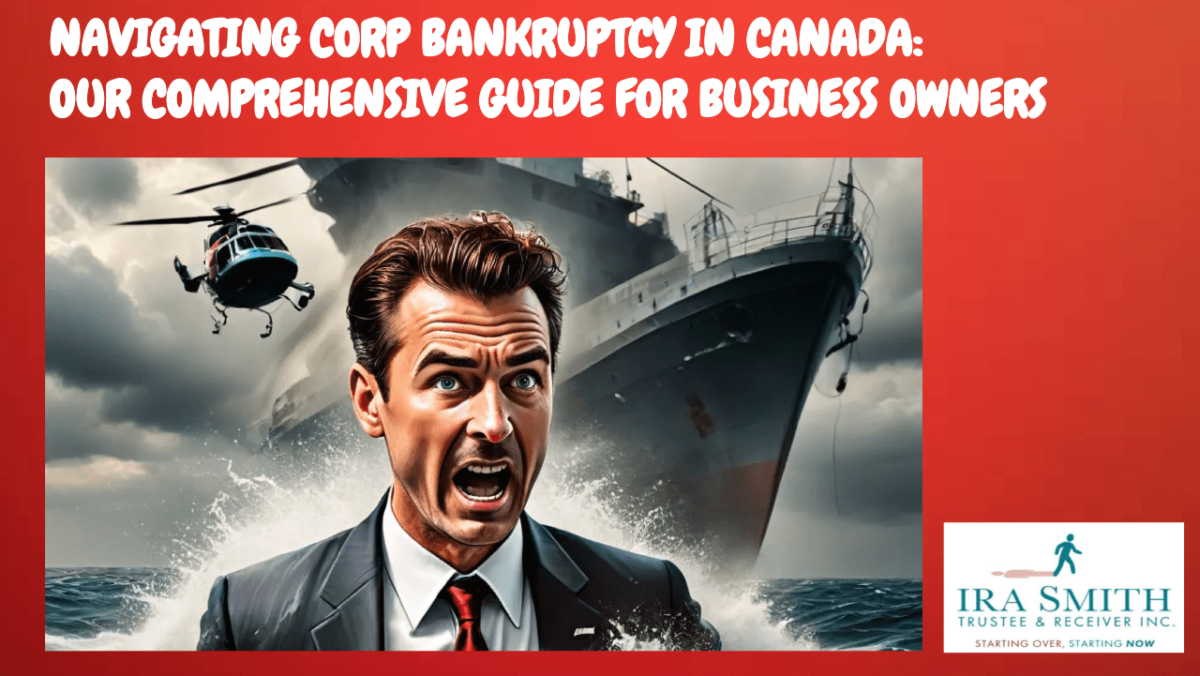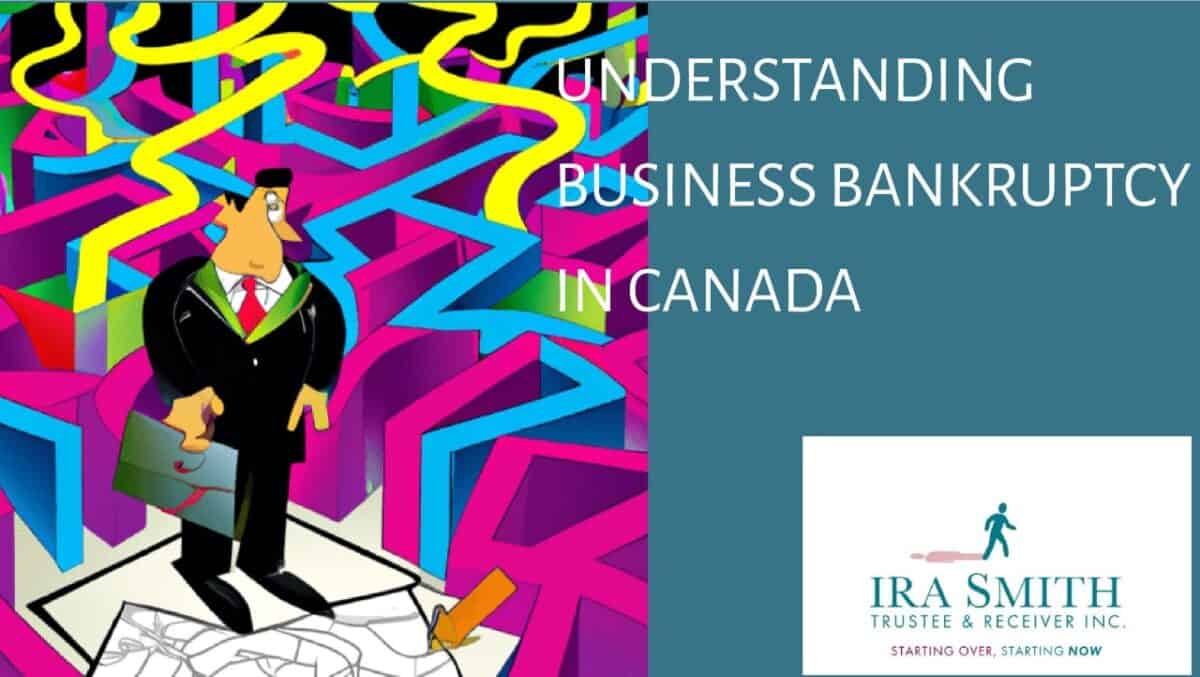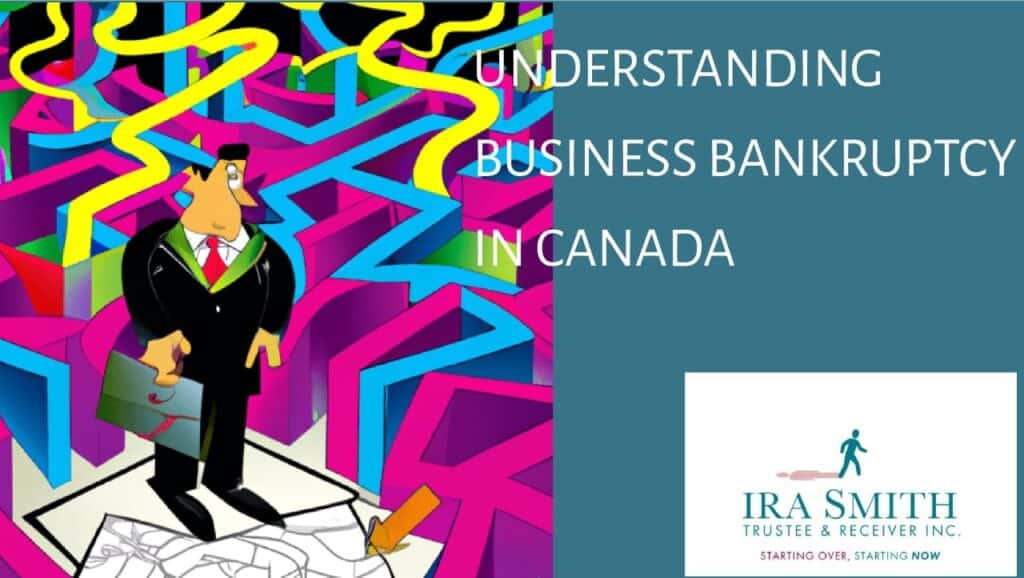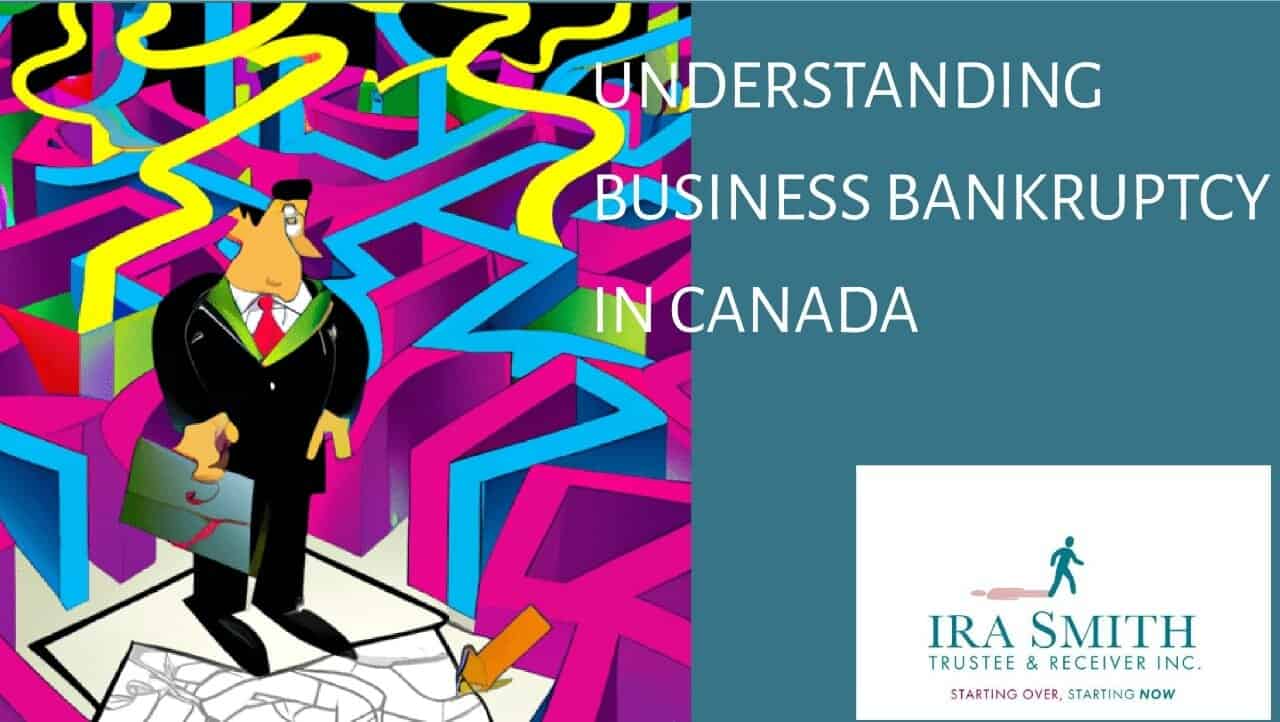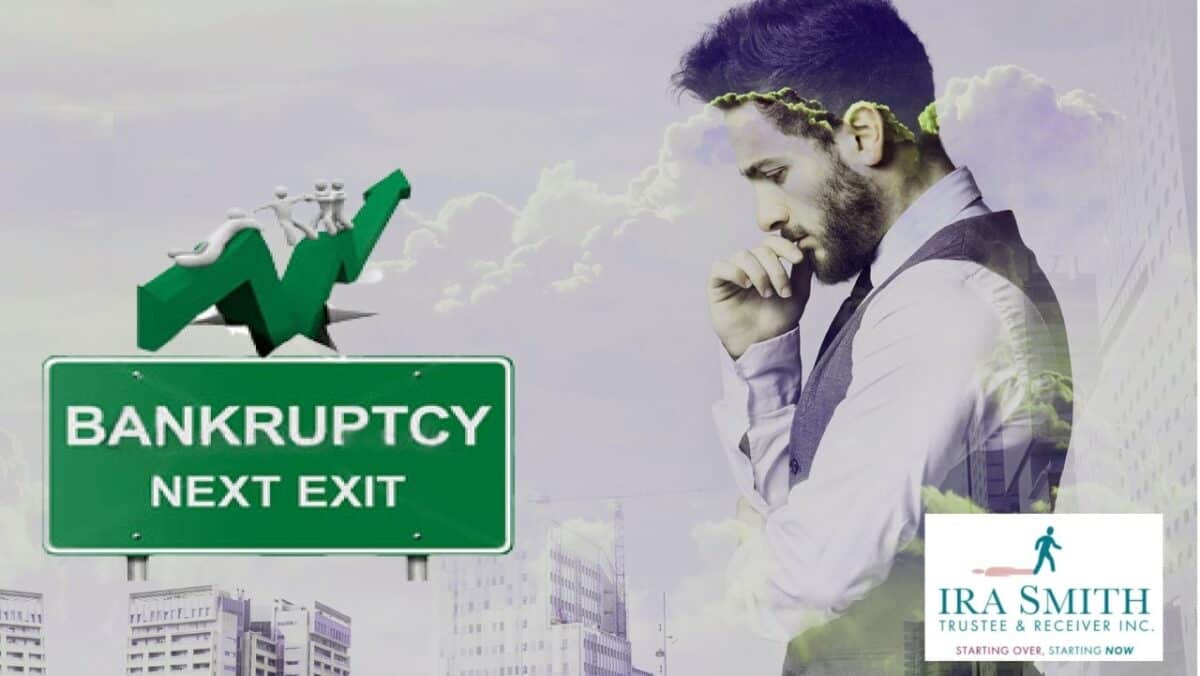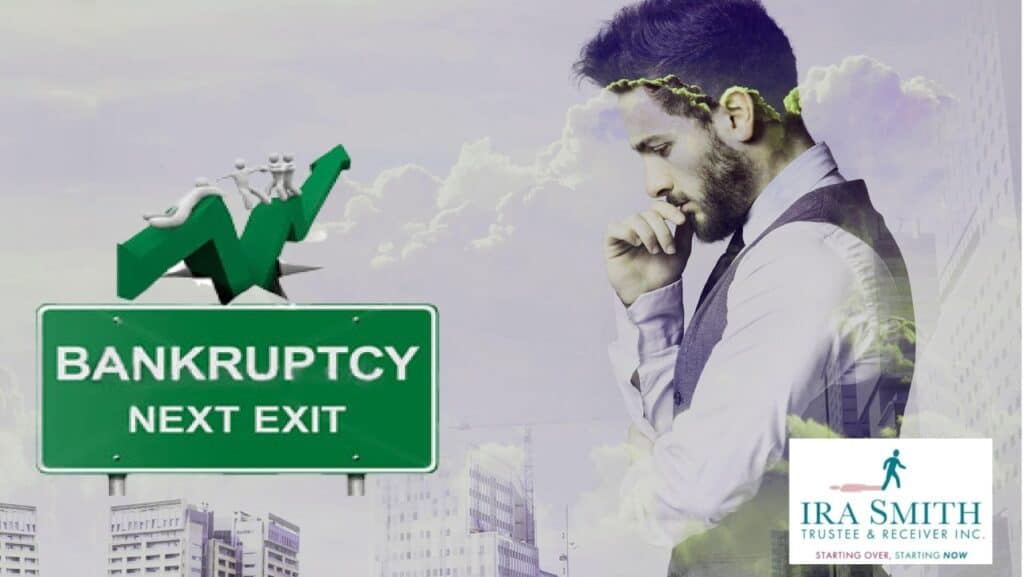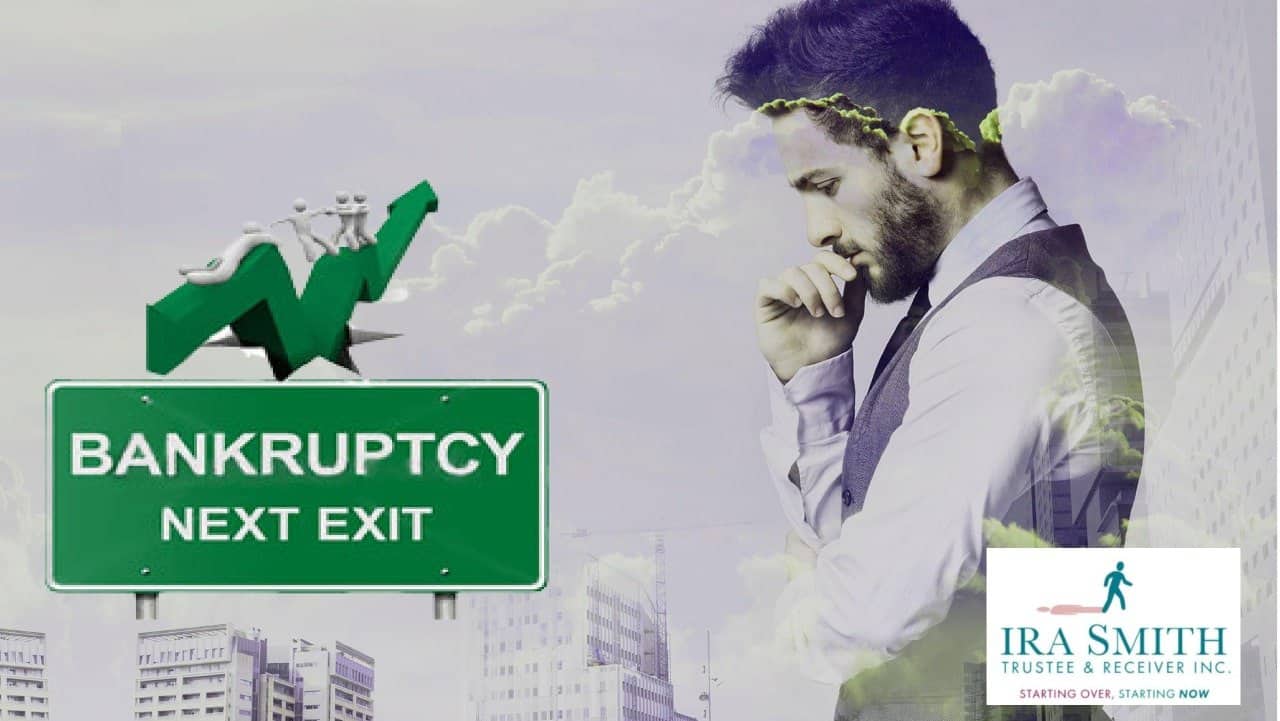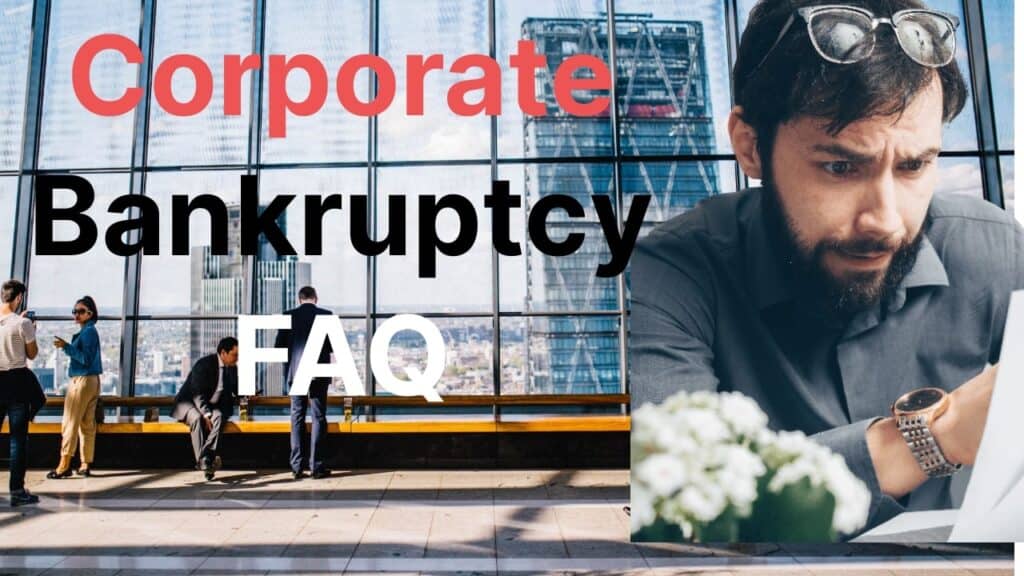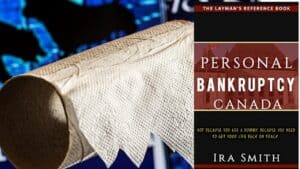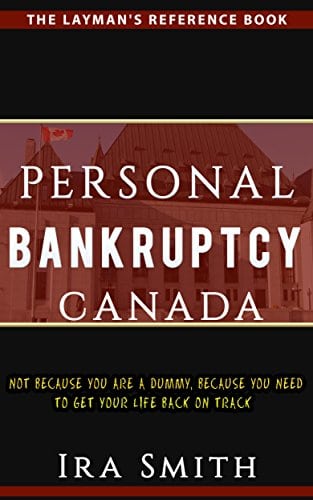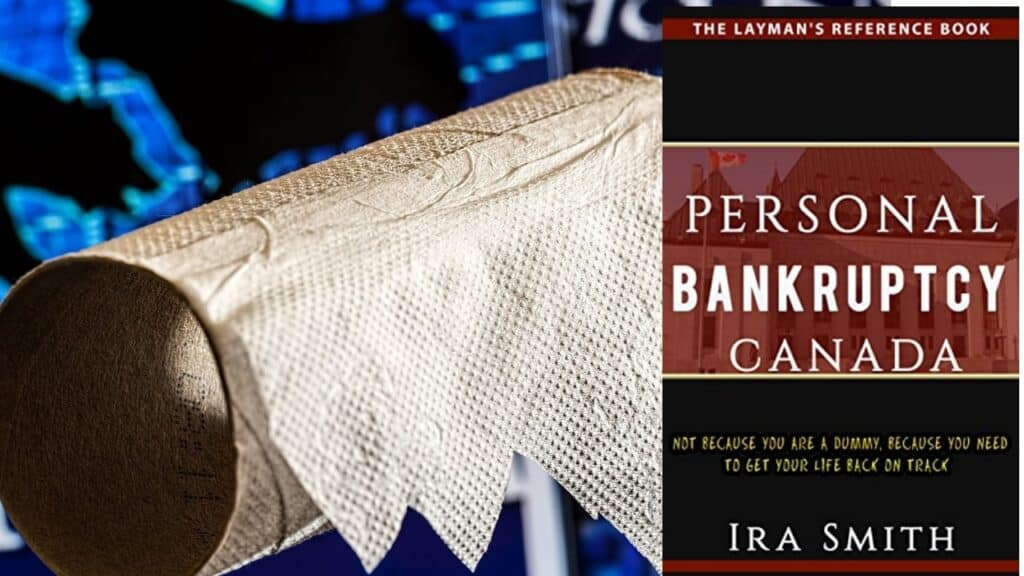Corp Bankruptcy Introduction
Running a business can be tough. Sometimes, despite your best efforts, your company may face overwhelming financial difficulties. When business debts pile up and staying afloat seems impossible, it might be time to consider corp bankruptcy proceedings. This can be stressful and complex, but understanding your options is crucial for making the best decisions for your company and yourself.
This guide aims to demystify Canada’s different types of company insolvency proceedings. We’ll break down the intricacies of bankruptcy, Division I proposals, and receivership, providing clarity on their implications for debt resolution and your business’s future.
Understanding What Is Corp Bankruptcy
In Canada, corp bankruptcy, also known as commercial bankruptcy or business bankruptcy, is a legal process that allows the incorporated legal entity unable to pay their debts to seek relief by filing bankruptcy. It provides a framework for either liquidating the company and distributing assets to creditors or reorganizing the business to become financially stable again.
Corp bankruptcy is fundamentally different from personal bankruptcy, which pertains to individuals, including sole proprietorships and partnerships. While personal bankruptcy is designed to assist individuals in obtaining a fresh start by addressing their personal assets, corporate bankruptcy seeks to facilitate either an orderly dissolution of the company or its restructuring.
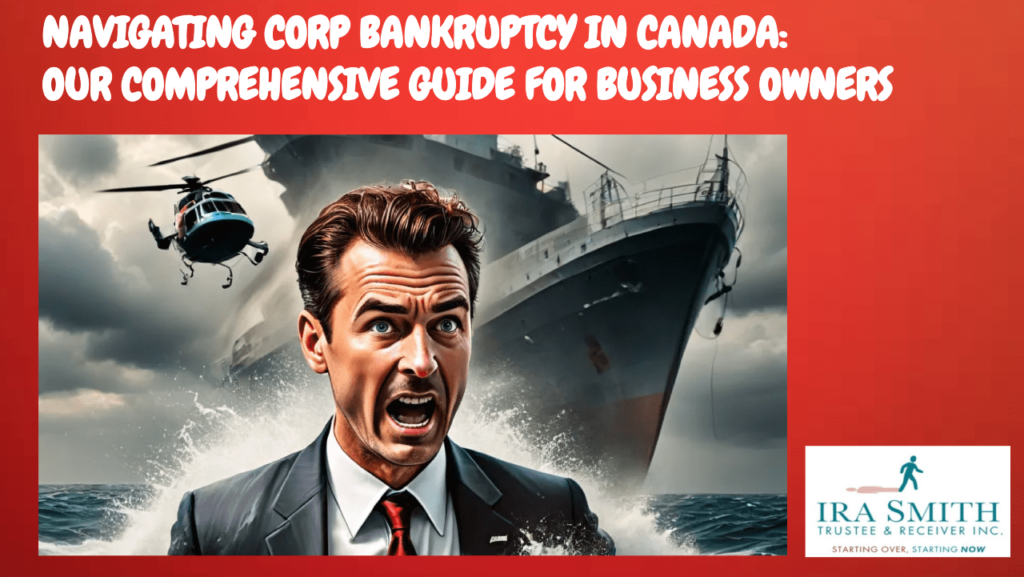
Navigating this process necessitates specialized knowledge. A Licensed Insolvency Trustee, who is a federally licensed professional, plays an essential role in guiding you through the proceedings. They ensure compliance with the Bankruptcy and Insolvency Act (BIA) and other relevant regulations while effectively managing a variety of financial matters.
Types of Corp Bankruptcy Proceedings in Canada
Canadian law offers two primary avenues for addressing the corp bankruptcy process:
Liquidation
This involves closing down the business, selling its assets, and using the proceeds to pay creditors. It’s a final step, signifying the end of the company’s operations.
Reorganization
The objective of this initiative is to strategically restructure the company’s financial and operational frameworks, thereby ensuring its continued viability. Reorganization serves as a critical opportunity for businesses facing financial challenges, enabling them to navigate and potentially surmount their economic obstacles.
Let’s explore each type in greater detail.
Liquidation under Corp Bankruptcy
Liquidation is the process of winding up a company that can no longer meet its financial obligations. It follows a structured corporate bankruptcy process outlined in the BIA, which bears similarities to Chapter 7 of the US Bankruptcy Code.
Here’s a step-by-step breakdown of liquidation:
- Decision to File:
- The board of directors makes the difficult decision to file for bankruptcy
- . Assignment in Bankruptcy: A director, or the sole director, signs the required bankruptcy documents to make the company’s assignment into bankruptcy
- Appointment of the Licensed Insolvency Trustee: An insolvency trustee is appointed to oversee the process.
- Asset Transfer: All company assets are transferred to the Licensed Insolvency Trustee, which then manages and sells them. Distribution to Creditors: Proceeds from asset sales, after the cost of the corp bankruptcy proceedings, are distributed to creditors based on a predetermined legal priority.
- Secured creditors, such as lenders with liens on company assets, generally have priority over unsecured creditors.
- The company ceases to operate: Once assets are distributed, although the bankrupt corporation is not legally dissolved, it no longer operates.
Depending on whether the company is federally or provincially incorporated, eventually, the appropriate government authority will cancel the company’s charter.
Liquidation can be a challenging process, but it provides a structured way to wind down a company facing insurmountable financial difficulties and allows for a fair distribution of assets to creditors.
“The closure of a business doesn’t just impact balance sheets, it impacts lives.”
Reorganization: A Path to Recovery
Reorganization, often known as “bankruptcy protection,” provides struggling but viable businesses an opportunity to restructure their debts and operations, helping them avoid shutting down completely.
In Canada, there are two main legal options for corporate reorganization:
- Companies’ Creditors Arrangement Act (CCAA): This federal law is designed for larger corporations with debts over $5 million. The CCAA process is supervised by the court to ensure fairness and transparency.
- Division I Proposal under the BIA: This option is geared towards smaller businesses that don’t meet the debt threshold required for the CCAA.
Both of these processes are similar to Chapter 11 reorganizations in the US Bankruptcy Code, offering a structured way for companies to get back on their feet.
The reorganization process generally follows these steps:
- Filing for Protection: The company initiates the bankruptcy process by filing under the CCAA with the court or the Bankruptcy and Insolvency Act (BIA) with the Office of the Superintendent of Bankruptcy. A Licensed Insolvency Trustee is assigned to oversee the process, acting as either the Monitor for CCAA cases or the Proposal Trustee for Division I Proposals under the BIA.
- Stay of Proceedings: Once the filing is done, the court grants a stay of proceedings. This means creditors are temporarily barred from starting or continuing any legal actions against the company while it works on its reorganization.
- Plan Development: The company then creates a plan of arrangement (for CCAA) or a proposal (for BIA) that details how it plans to restructure its debts and operations.
- Creditor Approval: The proposed plan is presented to the creditors, who must approve it. A two-thirds majority vote is needed for the plan to pass.
- Court Approval: Finally, the court reviews the plan and must give its approval before the company can move forward with the implementation. This step is especially important for filings under the CCAA.
“Understanding your options is essential for financial clarity and future success.”
Division I Proposals vs. Bankruptcy: Understanding Key Legislation and the Nuances
Although both Division I proposals and bankruptcy fall under the umbrella of corp bankruptcy proceedings, they offer distinct approaches to dealing with financial distress.
Here’s a closer look at the key differences:
Feature | Division I Proposal | Bankruptcy |
Eligibility | Smaller corporations (debt typically below $5 | Any insolvent Any insolvent corporation |
Court involvement | Less involved; primarily oversees the approval process | Potentially more involved in settling disputes |
Flexibility | More flexible; allows for tailored debt restructuring plans | Less flexible; focuses on asset liquidation and distribution |
Timeframe | Shorter timeframe for filing a plan | No specific timeframe |
Outcome if rejected | Automatic bankruptcy | N/A |
Cost | Can be more costly due to the need to restructure operations and negotiate with creditors | Cost depends on complexity and types of assets to be sold |

Choosing the right path depends on your company’s specific circumstances, the severity of its financial troubles, and the potential for recovery.
Receivership: When Secured Creditors Take Action
Receivership is a legal process that empowers a receiver, which in Canada can only be a licensed insolvency practitioner, to take control of a company’s assets when it defaults on secured loans.
There are two types of receivership:
- Private Receivership: The secured creditor appoints a receiver based on the terms of the security agreement, through an appointment letter.
- Court-Appointed Receivership: The court appoints a receiver upon application, usually by a secured creditor.
The receiver has the authority to:
- Take possession of corporate assets.
- Manage the assets, potentially running the business temporarily.
- Sell assets to recover the secured creditors’ debts, in order of priority.
The primary responsibility of a privately appointed receiver is to the appointing creditor. In contrast, a court-appointed receiver has a duty to all stakeholders and may be subject to court-imposed restrictions.
Receivership can be a powerful tool for secured creditors seeking to recover their funds, but it often results in the liquidation of the company. It may also occur concurrently with corp bankruptcy proceedings, especially when secured creditors hold significant claims against the company.
Corp Bankruptcy: Weighing the Pros and Cons
Each corp bankruptcy proceeding presents unique advantages and disadvantages. Let’s examine these for each option:
Advantages and Disadvantages of Liquidation
Advantages | Disadvantages |
|---|---|
Provides a legal framework for businesses unable to pay their debts. | Results in the closure of the business. |
Offers an orderly process for winding down the business. | This may lead to action taken due to personal liability for directors for specific debts. |
Facilitates the fair distribution of assets to creditors based on their legal priority. | Can be a time-consuming and expensive process. |
Can negatively impact the reputation of the directors. |
Advantages and Disadvantages of Reorganization
Advantages | Disadvantages |
|---|---|
Offers a chance to save the business and preserve jobs. | May not be successful, leading to eventual liquidation. |
Provides an opportunity to improve profitability and efficiency. | Can negatively impact employee morale and customer confidence during the restructuring process. |
Allows for the modernization of strategies and financial arrangements. | Requires a significant time investment and may cause cash flow challenges. |
Can be conducted informally or formally through the BIA or CCAA. |
“Reorganization aims to breathe new life into a struggling company.”
Advantages and Disadvantages of Receivership
Advantages | Disadvantages |
|---|---|
Offers a direct and efficient method for secured creditors to recover their funds. | Focuses primarily on protecting the interests of the secured creditor, potentially neglecting the interests of other stakeholders. |
May facilitate the sale of the business as a going concern, preserving jobs. | The receiver may face conflicts of interest between their duty to the appointing creditor and their duty to the company. |

Corporate Recovery and Restructuring: Exploring Alternatives to Corp Bankruptcy in Canada With Other Potential Recovery Options
Before resorting to corp bankruptcy proceedings, it’s essential to explore alternative solutions that might help your company recover without resorting to formal legal processes.
Here are five alternatives to consider:
Cost-Cutting and Budgeting
Implement tighter spending controls and create a realistic cash flow budget. Identifying and eliminating unnecessary expenses can free up funds to address debt obligations.
Debt Refinancing
Consider looking into refinancing options to combine your current debts into a more manageable repayment plan. This could include discussing with your lenders to secure lower interest rates or longer repayment terms.
Shareholder Investment
Consider seeking additional investment from existing shareholders. This infusion of capital can bolster the company’s financial stability and allow it to meet its obligations.
Informal Debt Settlement
Engage in direct negotiations with creditors to reach an informal debt settlement agreement. This might involve proposing a reduced payment amount or a revised payment schedule.
Asset Sales
Evaluate the possibility of selling non-core assets to raise capital. This can provide immediate cash flow to address pressing debt payments and improve the company’s overall financial health.
Informal workouts, negotiated directly with creditors, often provide a more cost-effective and faster solution than formal corp bankruptcy proceedings. However, they require cooperation and flexibility from all parties involved.
If these alternatives prove insufficient, and the company has the potential for long-term viability, restructuring through the CCAA or a Division I proposal under the BIA becomes a viable option. However, if the company is deemed not viable, receivership may be the most appropriate course of action, especially for secured creditors.
Corp bankruptcy FAQs
- What is the difference between “insolvency” and “bankruptcy” in Canada?
While the terms are often used interchangeably, they have distinct meanings under Canadian law. Insolvency is a financial state where a debtor is unable to pay their debts as they become due. This could be due to various reasons like business downturns or personal financial mismanagement.
Bankruptcy, on the other hand, is a legal process initiated when an insolvent person’s assets are transferred to a Licensed Insolvency Trustee. The insolvency trustee then distributes these assets to creditors based on a priority order set by the BIA.
In simpler terms, insolvency is the financial condition, while bankruptcy is the legal process to address it.
- What are the primary laws governing insolvency and bankruptcy laws in Canada?
Canada’s insolvency framework primarily comprises two federal statutes: The BIA: This Act applies to both personal and corporate bankruptcies. It outlines the procedures for filing for bankruptcy, governs insolvency trustee licensing, and dictates the distribution of a bankrupt entity’s assets among creditors. The CCAA: This Act provides a framework for restructuring insolvent companies with debts exceeding $5 million. It allows for the creation of a Plan of Arrangement to compromise with creditors or facilitate the sale of the business under court supervision.
- What does the Office of the Superintendent of Bankruptcy (OSB) do?
The OSB is the federal agency that oversees bankruptcy processes in Canada. Its main responsibilities include:
- Overseeing cases under the Bankruptcy and Insolvency Act (BIA) and the Companies’ Creditors Arrangement Act (CCAA).
- Making sure that the laws set out in the BIA and CCAA are followed.
- Regulating Licensed Insolvency Trustees.
- Keeping a public record of filings related to the BIA and CCAA.
4. What happens to a company’s operations when it files for bankruptcy?
Typically, day-to-day business operations cease upon filing for bankruptcy. A LIT takes control of the company’s assets, liquidates them, and distributes the proceeds to creditors based on the BIA’s priority rules.
Shareholders generally lose their investments, and directors may face personal liability for certain debts, depending on specific circumstances and provincial laws.
- How does the Canadian insolvency system prioritize creditors?
The BIA establishes a specific order of priority for creditor claims:
- Deemed trusts: Amounts like unremitted source deductions from employees and unremitted HST are held in trust for the Crown and are paid first.
- Unpaid suppliers: Suppliers can reclaim unpaid goods delivered within a specific timeframe before bankruptcy.
- Super-priorities: These include unpaid wages, pension contributions, and costs for environmental cleanup.
- Secured claims: Creditors with security over specific assets are paid from the proceeds of those assets.
- Preferred claims: Certain unsecured claims under section 136(1) of the BIA, such as administrative costs of the bankruptcy, are prioritized.
- Ordinary unsecured claims: All other claims are paid proportionally from the remaining funds.
- Can a company avoid bankruptcy in Canada?
Yes, alternatives to bankruptcy debt relief options are:
- Proposal to Creditors (BIA): A company may propose a plan to restructure its debts and negotiate compromises with creditors. If this proposal is accepted by both the creditors and the court, the company can successfully avert bankruptcy.
- Restructuring under the CCAA: Corporations with debts exceeding $5 million may seek court protection under the CCAA to undertake a restructuring of their operations and financial obligations.
- Informal Arrangements: Companies have the option to engage in direct negotiations with creditors to establish informal agreements, which may include debt restructuring or payment deferrals.
- What is receivership, and how does it relate to bankruptcy?
Receivership is a legal process where a secured creditor appoints a receiver to take control of a debtor’s assets, typically to enforce a security interest. This appointment can be made privately by the creditor or through a court order.
While receivership can happen at the same time as bankruptcy, it mainly aims to protect the interests of the secured creditor. The receiver may sell off assets to pay back the secured debt, whereas a trustee in bankruptcy oversees the distribution of assets to all creditors following the priorities set out in the BIA.
- How can a foreign company with operations in Canada be affected by Canadian insolvency laws?
If a foreign company has assets or carries on business in Canada, it falls under the jurisdiction of Canadian insolvency laws like the BIA and CCAA. It can be subject to bankruptcy proceedings or restructuring efforts in Canada.
The BIA also has provisions for recognizing and cooperating with foreign insolvency proceedings, allowing for coordination between Canadian courts and foreign jurisdictions in cross-border insolvency cases.
Conclusion: Seeking Expert Guidance for Corp Bankruptcy
Navigating the complexities of corp bankruptcy in Canada demands a thorough understanding of the legal frameworks and available options. Bankruptcy, Division I proposals, and receivership each offer distinct paths with varying implications for debt resolution, business operations, and stakeholder interests.
Remember, seeking professional advice is paramount. A LIT and a qualified lawyer specializing in insolvency can provide expert guidance, ensuring you make informed decisions and protect your rights throughout the process. Early intervention and expert assistance can significantly improve the chances of a successful outcome, whether that means restructuring your company or navigating a controlled and dignified wind-down.
I hope you enjoyed this corp bankruptcy Brandon’s Blog. Do you or your company have too much debt? Are you or your company in need of financial restructuring due to distressed real estate or other reasons? The financial restructuring process is complex. The Ira Smith Team understands how to do a complex restructuring. However, more importantly, we understand the needs of the entrepreneur or someone with too much personal debt.
You are worried because you are facing significant financial challenges. It is not your fault that you are in this situation. You have been only shown the old ways that do not work anymore. The Ira Smith Team uses new modern ways to get you out of your debt troubles while avoiding the bankruptcy process. We can get you debt relief freedom using processes that are a bankruptcy alternative.
The stress placed upon you is huge. We understand your pain points. We look at your entire situation and devise a strategy that is as unique as you and your problems; financial and emotional. The way we take the load off of your shoulders and devise a plan, we know that we can help you.
We know that people facing financial problems need a realistic lifeline. There is no “one solution fits all” approach with the Ira Smith Team.
That is why we can develop a restructuring process as unique as the financial problems and pain you are facing. If any of this sounds familiar to you and you are serious about finding a solution, contact the Ira Smith Trustee & Receiver Inc. team today.
Call us now for a free consultation. We will get you or your company back on the road to healthy stress-free operations and recover from the pain points in your life, Starting Over, Starting Now.
The information provided in this Brandon’s Blog is intended for educational purposes only. It is not intended to constitute legal, financial, or professional advice. Readers are encouraged to seek professional advice regarding their specific situations. The content of this Brandon’s Blog should not be relied upon as a substitute for professional guidance or consultation. The author, Ira Smith Trustee & Receiver Inc. as well as any contributors to this Brandon’s Blog, do not assume any liability for any loss or damage resulting from reliance on the information provided herein.


